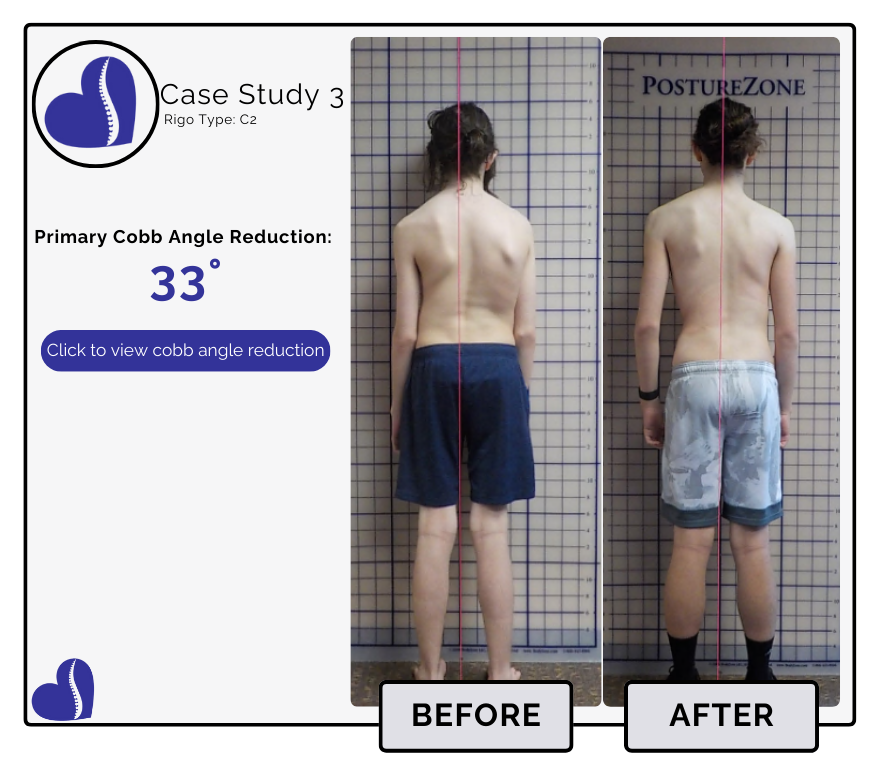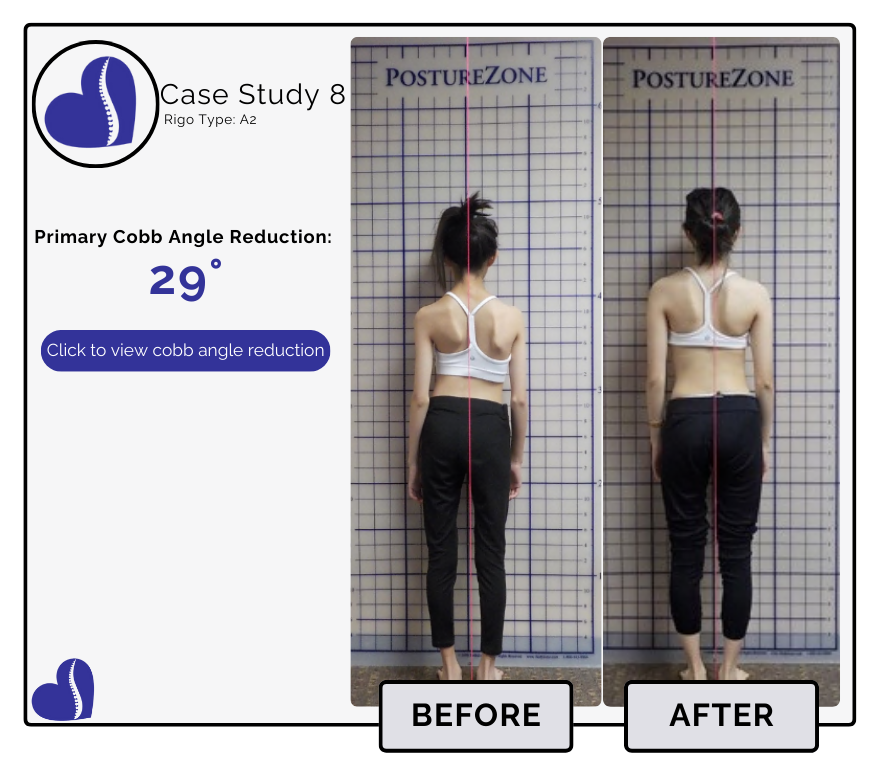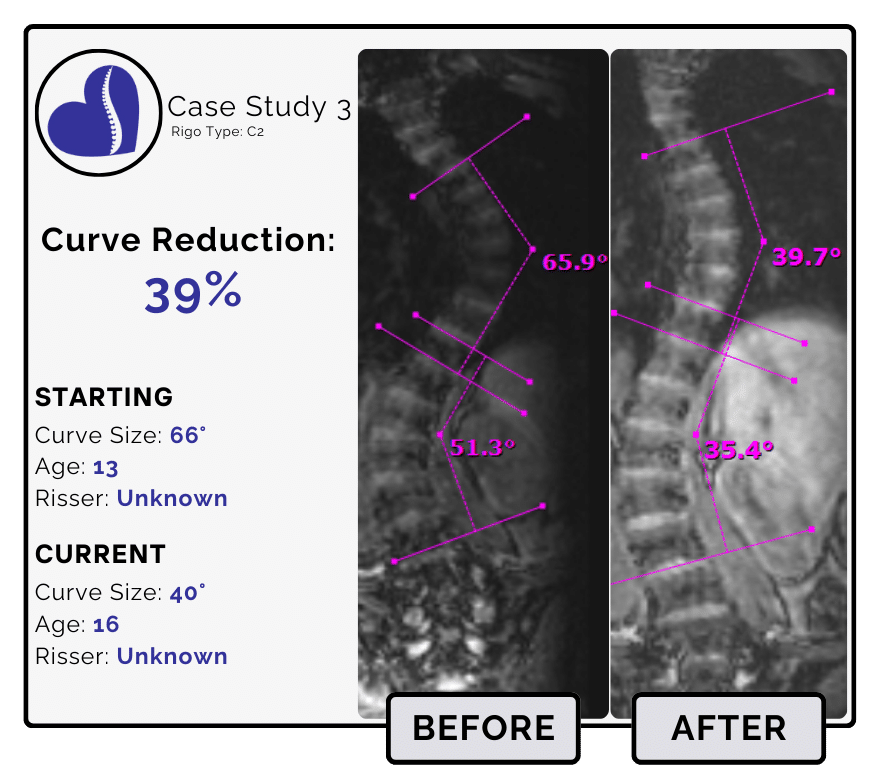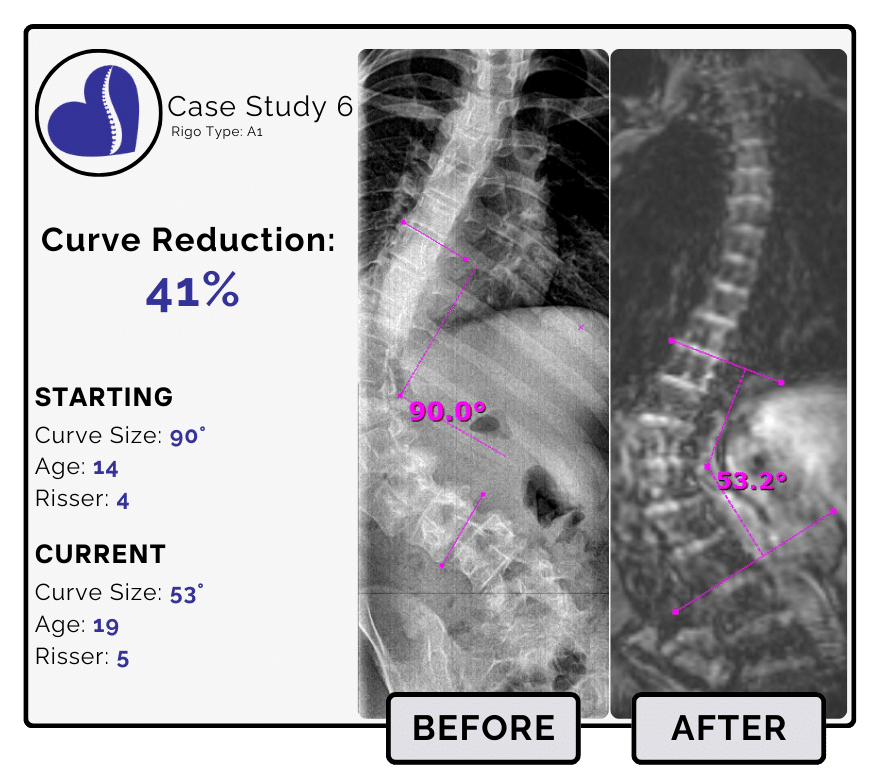Scoliosis Treatment Results by Posture Transformations
As you view our pre- and post-treatment posture results, remember that the success of treatment and posture improvement depends on both skeletal maturity and how early scoliosis is detected.
How does Scoliosis affect posture?

We know from a variety of scientific studies that the rotation of the spine which can accompany a scoliosis occurs as the body attempts to adapt and provide the shortest path possible to the tight or shortened spinal cord; resulting in a visible rib hump. Aside from the rib hump, how can a scoliosis and the rotation of the spine affect posture?
There are several ways that scoliosis and rotation of the spine can affect a patient’s posture; and not all items discussed here may be present in a single case. As you will see in our post-treatment posture results, the impact scoliosis can have on posture is not a 1:1 correlation with the size or severity of the curve. As we see in the diagram to the right (below on mobile), scoliosis can impact posture at the shoulders; hips; and waist, in addition to the visible curve of the spine.
Despite a patient’s best efforts to “stand tall” and “stand straight”, we often observe uneven (often referred to as asymmetrical) shoulders combined with a prominent shoulder blade (scapula). This uneven shoulder blade can be elevated and protruding (protracted), further enhancing the visual difference between the shoulders.
In addition the the asymmetrical shoulders, we often see both uneven hips and an uneven waist as the body continued to try and adapt to the scoliosis and relieve the tension placed on the spinal cord; even if this results in a “collapse” of the patient’s posture.


















